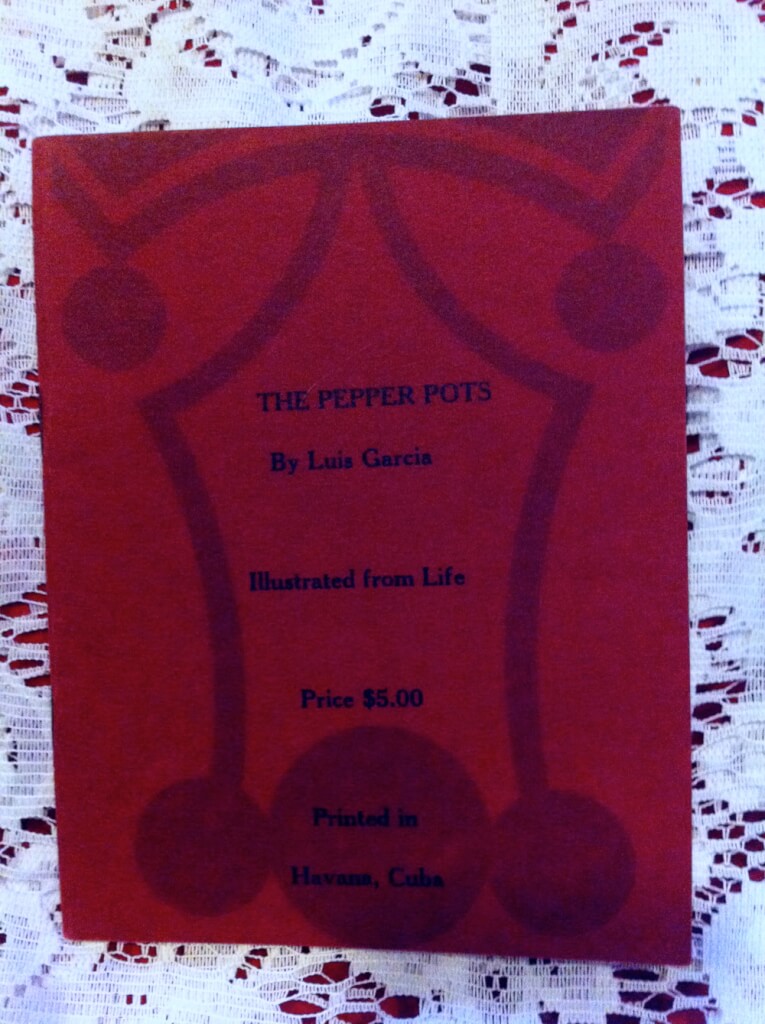-
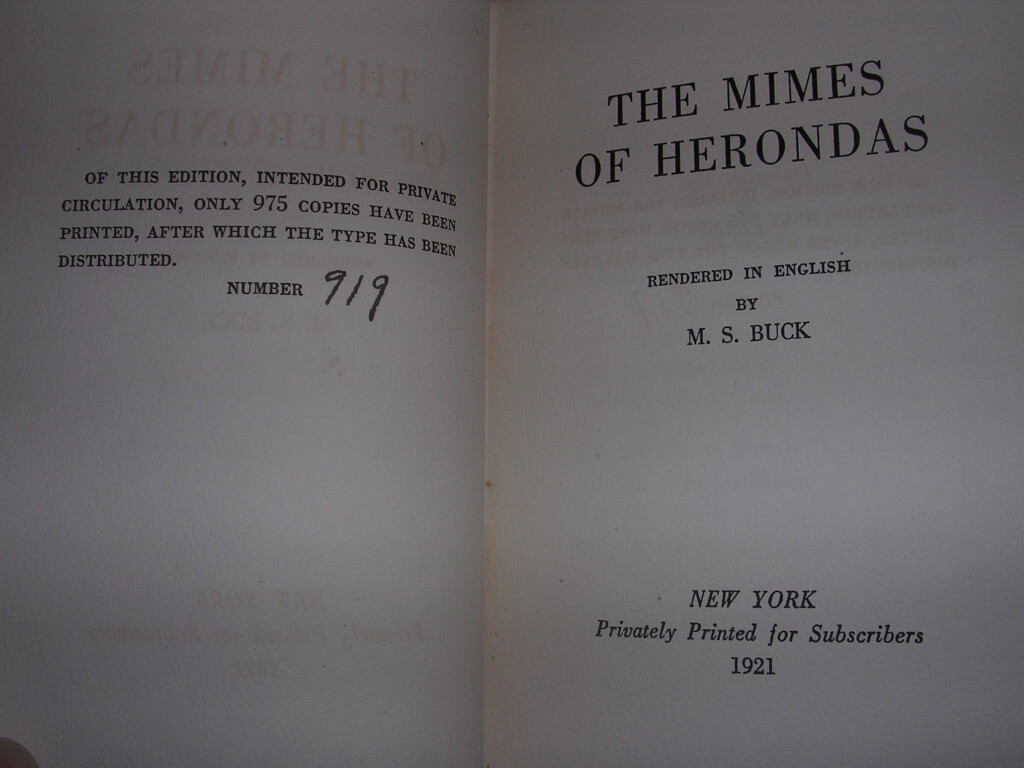
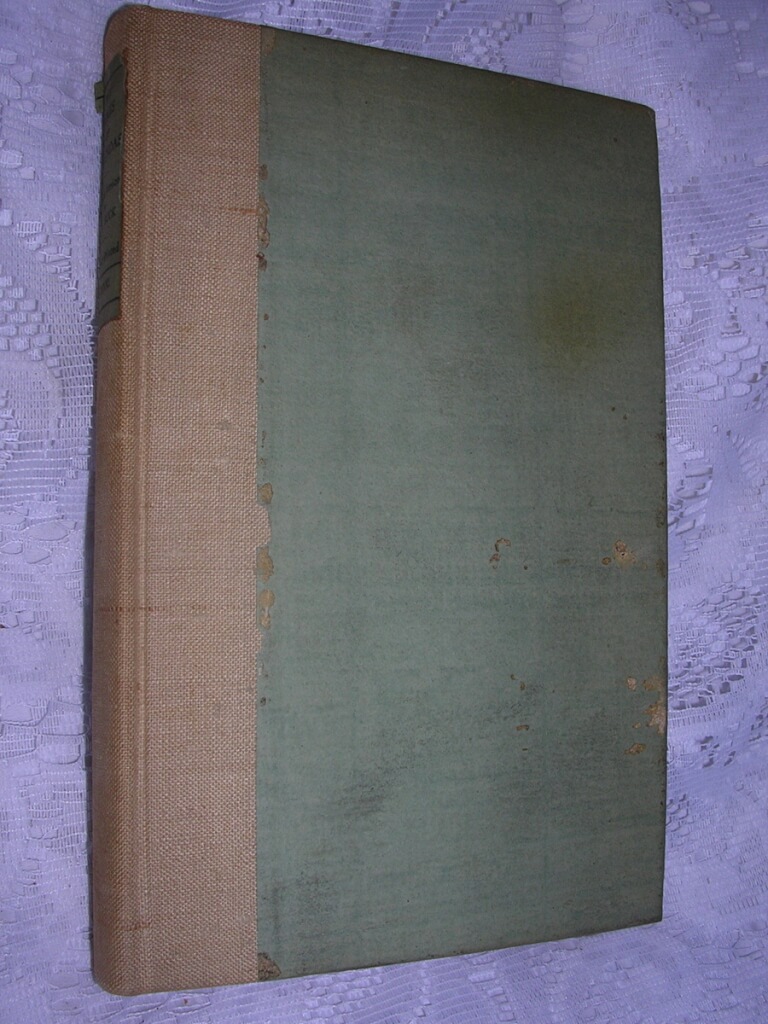 The Mimes of Herondas, trans. M. S. Buck (Privately Printed for Subscribers, New York, 1921, #919/975) 7" X 4 5/8", 119pp, hardbound no DJ, paper boards with beige cloth spine, top edge gilt, others deckle, good condition, lightly soiled Herodas was a Greek poet and the author of short humorous dramatic scenes in verse, written under the Alexandrian empire in the 3rd century BC. Mimes were scenes in popular life in South Italy and Sicily, written in the language of the people, vigorous with racy proverbs such as we get in other reflections of that region. The Mimes of Herodas have been known to us only since the discovery and publication of the "Kenyon", M. S. Buck, by the British Museum in 1891 (from a parchment containing 7 legible mimes half of the 8th and a fragment of the 9th).
The Mimes of Herondas, trans. M. S. Buck (Privately Printed for Subscribers, New York, 1921, #919/975) 7" X 4 5/8", 119pp, hardbound no DJ, paper boards with beige cloth spine, top edge gilt, others deckle, good condition, lightly soiled Herodas was a Greek poet and the author of short humorous dramatic scenes in verse, written under the Alexandrian empire in the 3rd century BC. Mimes were scenes in popular life in South Italy and Sicily, written in the language of the people, vigorous with racy proverbs such as we get in other reflections of that region. The Mimes of Herodas have been known to us only since the discovery and publication of the "Kenyon", M. S. Buck, by the British Museum in 1891 (from a parchment containing 7 legible mimes half of the 8th and a fragment of the 9th). -

 The Mimes of Herondas, trans. M. S. Buck (Privately Printed for Subscribers, New York, 1921, #70/975) 7" X 4 5/8", 119pp, hardbound no DJ, paper boards with beige cloth spine, top edge gilt, others deckle, good condition, lightly soiled Herodas was a Greek poet and the author of short humorous dramatic scenes in verse, written under the Alexandrian empire in the 3rd century BC. Mimes were scenes in popular life in South Italy and Sicily, written in the language of the people, vigorous with racy proverbs such as we get in other reflections of that region. The Mimes of Herodas have been known to us only since the discovery and publication of the "Kenyon", M. S. Buck, by the British Museum in 1891 (from a parchment containing 7 legible mimes half of the 8th and a fragment of the 9th).
The Mimes of Herondas, trans. M. S. Buck (Privately Printed for Subscribers, New York, 1921, #70/975) 7" X 4 5/8", 119pp, hardbound no DJ, paper boards with beige cloth spine, top edge gilt, others deckle, good condition, lightly soiled Herodas was a Greek poet and the author of short humorous dramatic scenes in verse, written under the Alexandrian empire in the 3rd century BC. Mimes were scenes in popular life in South Italy and Sicily, written in the language of the people, vigorous with racy proverbs such as we get in other reflections of that region. The Mimes of Herodas have been known to us only since the discovery and publication of the "Kenyon", M. S. Buck, by the British Museum in 1891 (from a parchment containing 7 legible mimes half of the 8th and a fragment of the 9th). -

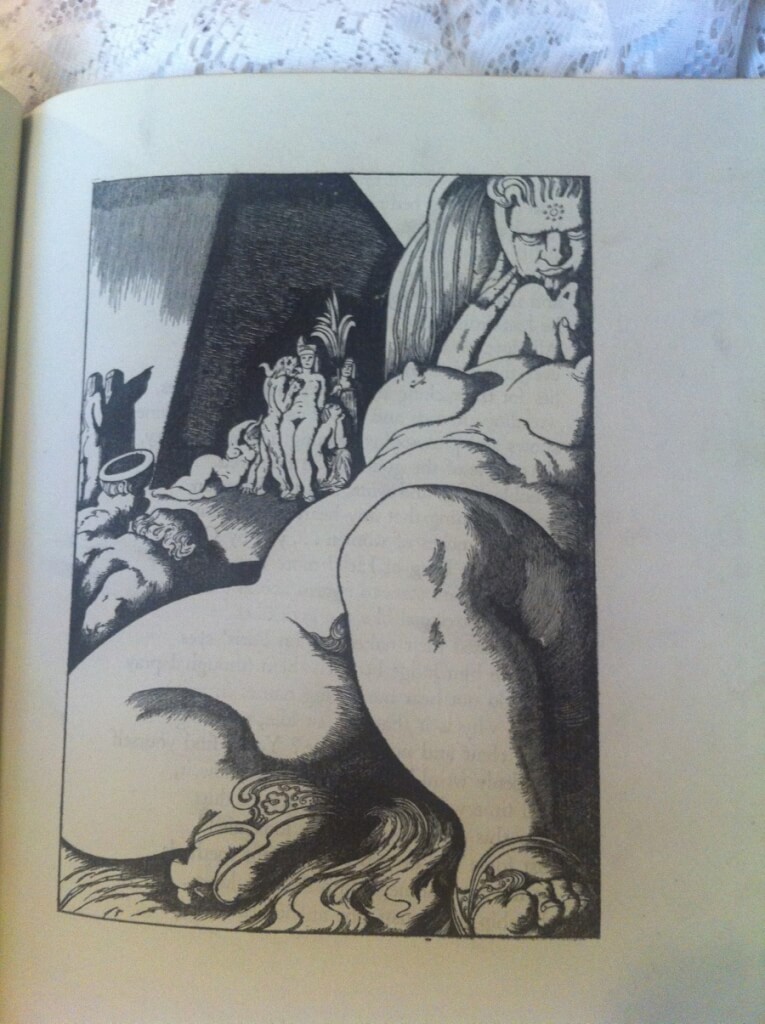 The Mimiambs of Herondas, Herodas, Translated by Jack Lindsay, Decorated by Alan Odle, with a Foreword by Brian Penton. (The Fanfrolico Press, London, nd [c. 1929], #351/375 [first edition, and first Fanfrolico to be printed in London]) 11 7/8" X 9 3/8", unpaginated 72pp, hardbound no DJ, original buckram-backed decorated Japanese paper boards with plain green cloth spine and gilt lettering, top edge gilt, other edges deckle, poor condition, boards show major wear, spine worn off, binding still good, boards still attached, interior pages are fine, Cloister types on Van Gelder Antique handmade paper Herodas was a Greek poet and the author of short humorous dramatic scenes in verse, written under the Alexandrian empire in the 3rd century BC. Mimes were scenes in popular life in South Italy and Sicily, written in the language of the people, vigorous with racy proverbs such as we get in other reflections of that region. The Mimes of Herodas have been known to us only since the discovery and publication of the "Kenyon", M. S. Buck, by the British Museum in 1891 (from a parchment containing 7 legible mimes half of the 8th and a fragment of the 9th). This was Fanfrolico's first London book. It was published "for subscribers to The Franfrolico Press". This new translation of Mimiambs of Herondas was translated by Jack Lindsay and beautifully illustrated by Alan Odle whose grotesque and subversive style was a precursor of surrealism. This is a beautiful printed book in great condition and quite rare. Fanfrolico Press, Australia’s first ‘private press’ in the arts-and-craft tradition, was founded by Jack Lindsay, P. R. Stephensen and John Kirtley, originally in North Sydney in 1923. The press specialized in printings artful, limited editions of classics and forgotten works that were suited to the extravagant style of artist like his father, artist, sculptor and author Norman Lindsay who illustrated many of their books. Fanfrolico was scornful of modernism and with its florid style determinedly backward-looking. They did surprisingly well, despite the lack of business expertise of their young, ambitious "bohemian" owners, eking out a living despite the risky move to London in 1926 and upheavals in ownership that saw the departure in 1927 of Kirtley, and then Stephenson in 1929. Sometime in 1930 they published their last book.
The Mimiambs of Herondas, Herodas, Translated by Jack Lindsay, Decorated by Alan Odle, with a Foreword by Brian Penton. (The Fanfrolico Press, London, nd [c. 1929], #351/375 [first edition, and first Fanfrolico to be printed in London]) 11 7/8" X 9 3/8", unpaginated 72pp, hardbound no DJ, original buckram-backed decorated Japanese paper boards with plain green cloth spine and gilt lettering, top edge gilt, other edges deckle, poor condition, boards show major wear, spine worn off, binding still good, boards still attached, interior pages are fine, Cloister types on Van Gelder Antique handmade paper Herodas was a Greek poet and the author of short humorous dramatic scenes in verse, written under the Alexandrian empire in the 3rd century BC. Mimes were scenes in popular life in South Italy and Sicily, written in the language of the people, vigorous with racy proverbs such as we get in other reflections of that region. The Mimes of Herodas have been known to us only since the discovery and publication of the "Kenyon", M. S. Buck, by the British Museum in 1891 (from a parchment containing 7 legible mimes half of the 8th and a fragment of the 9th). This was Fanfrolico's first London book. It was published "for subscribers to The Franfrolico Press". This new translation of Mimiambs of Herondas was translated by Jack Lindsay and beautifully illustrated by Alan Odle whose grotesque and subversive style was a precursor of surrealism. This is a beautiful printed book in great condition and quite rare. Fanfrolico Press, Australia’s first ‘private press’ in the arts-and-craft tradition, was founded by Jack Lindsay, P. R. Stephensen and John Kirtley, originally in North Sydney in 1923. The press specialized in printings artful, limited editions of classics and forgotten works that were suited to the extravagant style of artist like his father, artist, sculptor and author Norman Lindsay who illustrated many of their books. Fanfrolico was scornful of modernism and with its florid style determinedly backward-looking. They did surprisingly well, despite the lack of business expertise of their young, ambitious "bohemian" owners, eking out a living despite the risky move to London in 1926 and upheavals in ownership that saw the departure in 1927 of Kirtley, and then Stephenson in 1929. Sometime in 1930 they published their last book. -
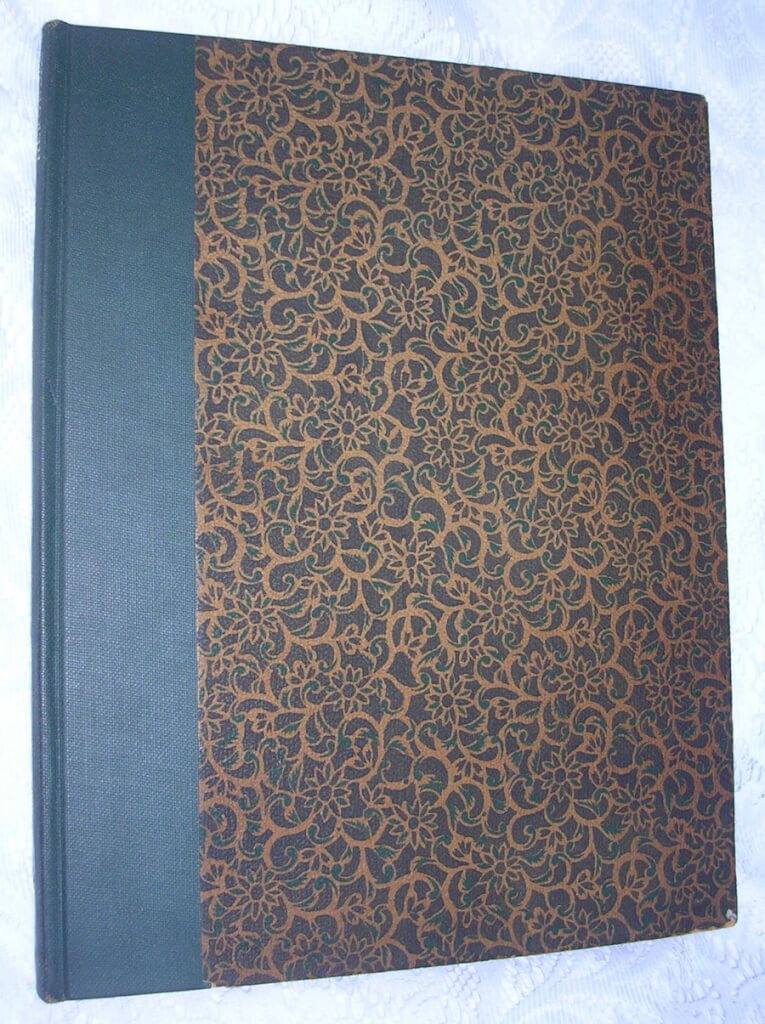
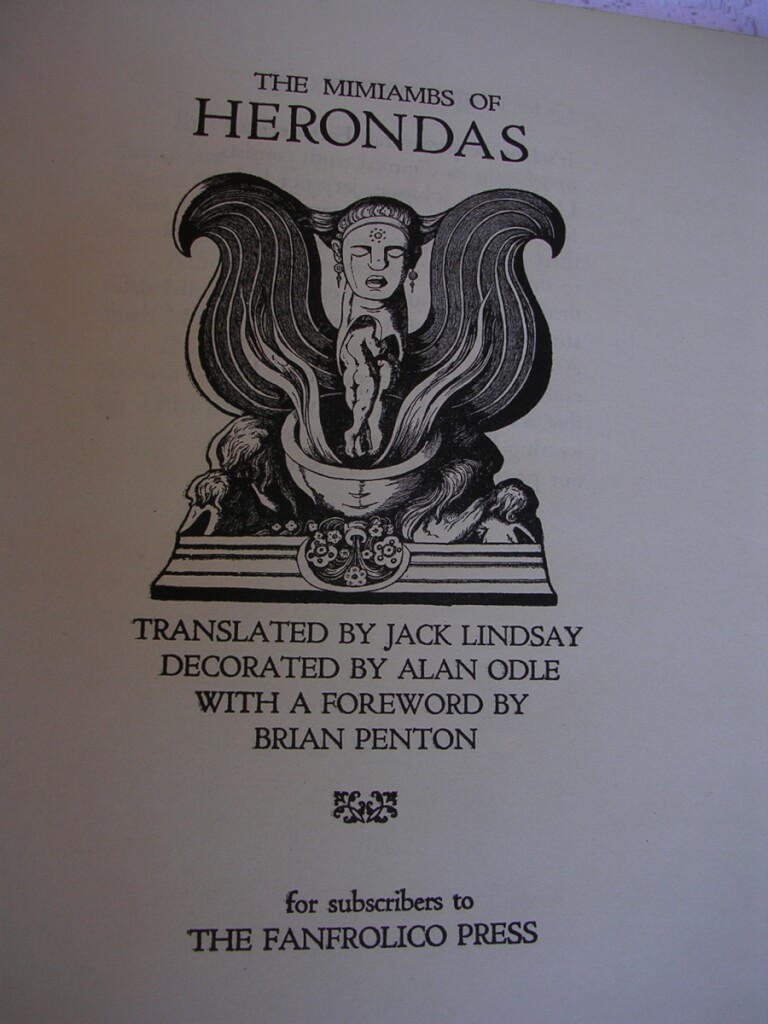 The Mimiambs of Herondas, Herodas, Translated by Jack Lindsay, Decorated by Alan Odle, with a Foreword by Brian Penton. (The Fanfrolico Press, London, nd [c. 1929], #106/375 [first edition, and first Fanfrolico to be printed in London]) 11 7/8" X 9 3/8", unpaginated 72pp, hardbound no DJ, original buckram-backed decorated Japanese paper boards with plain green cloth spine and gilt lettering, top edge gilt, other edges deckle, very good condition minor wear to bottom of boards, Cloister types on Van Gelder Antique handmade paper Herodas was a Greek poet and the author of short humorous dramatic scenes in verse, written under the Alexandrian empire in the 3rd century BC. Mimes were scenes in popular life in South Italy and Sicily, written in the language of the people, vigorous with racy proverbs such as we get in other reflections of that region. The Mimes of Herodas have been known to us only since the discovery and publication of the "Kenyon", M. S. Buck, by the British Museum in 1891 (from a parchment containing 7 legible mimes half of the 8th and a fragment of the 9th). This was Fanfrolico's first London book. It was published "for subscribers to The Franfrolico Press". This new translation of Mimiambs of Herondas was translated by Jack Lindsay and beautifully illustrated by Alan Odle whose grotesque and subversive style was a precursor of surrealism. This is a beautiful printed book in great condition and quite rare. Fanfrolico Press, Australia’s first ‘private press’ in the arts-and-craft tradition, was founded by Jack Lindsay, P. R. Stephensen and John Kirtley, originally in North Sydney in 1923. The press specialized in printings artful, limited editions of classics and forgotten works that were suited to the extravagant style of artist like his father, artist, sculptor and author Norman Lindsay who illustrated many of their books. Fanfrolico was scornful of modernism and with its florid style determinedly backward-looking. They did surprisingly well, despite the lack of business expertise of their young, ambitious "bohemian" owners, eking out a living despite the risky move to London in 1926 and upheavals in ownership that saw the departure in 1927 of Kirtley, and then Stephenson in 1929. Sometime in 1930 they published their last book.
The Mimiambs of Herondas, Herodas, Translated by Jack Lindsay, Decorated by Alan Odle, with a Foreword by Brian Penton. (The Fanfrolico Press, London, nd [c. 1929], #106/375 [first edition, and first Fanfrolico to be printed in London]) 11 7/8" X 9 3/8", unpaginated 72pp, hardbound no DJ, original buckram-backed decorated Japanese paper boards with plain green cloth spine and gilt lettering, top edge gilt, other edges deckle, very good condition minor wear to bottom of boards, Cloister types on Van Gelder Antique handmade paper Herodas was a Greek poet and the author of short humorous dramatic scenes in verse, written under the Alexandrian empire in the 3rd century BC. Mimes were scenes in popular life in South Italy and Sicily, written in the language of the people, vigorous with racy proverbs such as we get in other reflections of that region. The Mimes of Herodas have been known to us only since the discovery and publication of the "Kenyon", M. S. Buck, by the British Museum in 1891 (from a parchment containing 7 legible mimes half of the 8th and a fragment of the 9th). This was Fanfrolico's first London book. It was published "for subscribers to The Franfrolico Press". This new translation of Mimiambs of Herondas was translated by Jack Lindsay and beautifully illustrated by Alan Odle whose grotesque and subversive style was a precursor of surrealism. This is a beautiful printed book in great condition and quite rare. Fanfrolico Press, Australia’s first ‘private press’ in the arts-and-craft tradition, was founded by Jack Lindsay, P. R. Stephensen and John Kirtley, originally in North Sydney in 1923. The press specialized in printings artful, limited editions of classics and forgotten works that were suited to the extravagant style of artist like his father, artist, sculptor and author Norman Lindsay who illustrated many of their books. Fanfrolico was scornful of modernism and with its florid style determinedly backward-looking. They did surprisingly well, despite the lack of business expertise of their young, ambitious "bohemian" owners, eking out a living despite the risky move to London in 1926 and upheavals in ownership that saw the departure in 1927 of Kirtley, and then Stephenson in 1929. Sometime in 1930 they published their last book. -
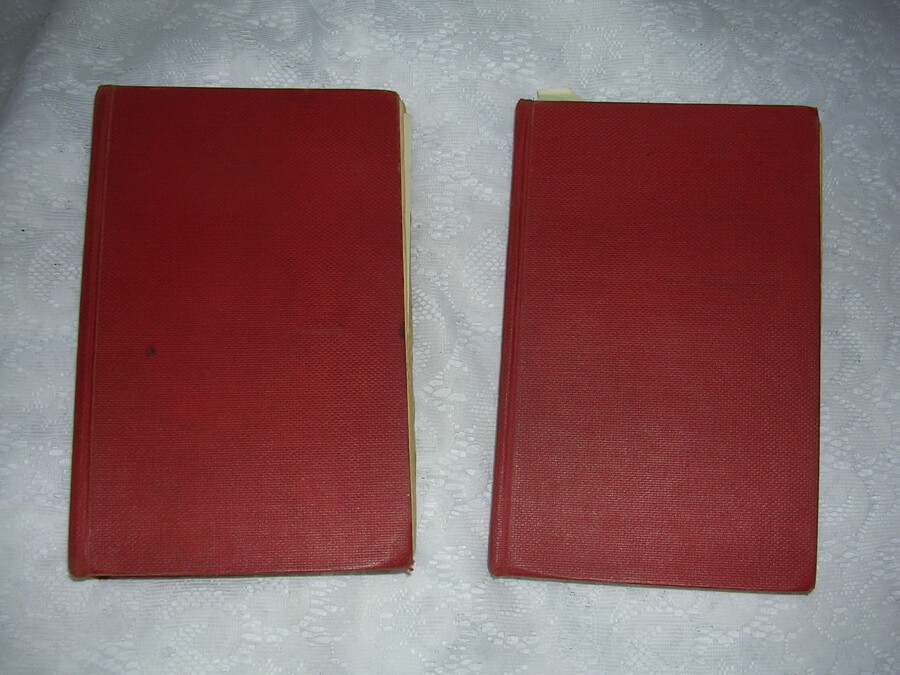
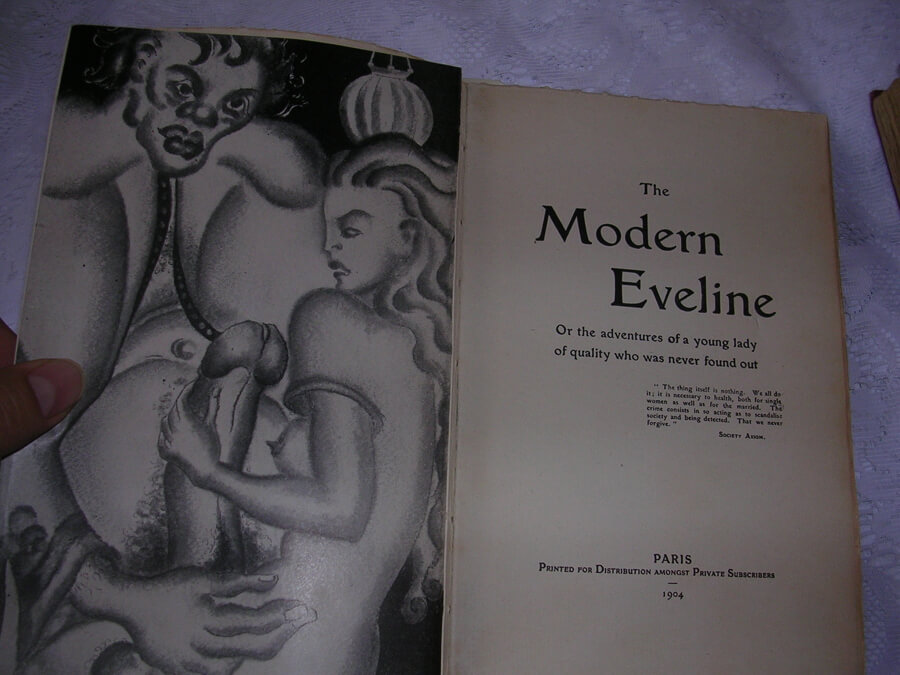 The Modern Eveline; or the adventures of a young lady of quality who was never found out (2 volumes), anonymous (Printed for Distribution Amongst Private Subscribers, Paris, 1904 [Miller Brothers, New York, c. 1930]) 9 1/8" X 6 7/8", 2 vol. 322pp 222pp, hardbound no DJ, plain blank red cloth boards and spine, deckle edges, fair condition, boards almost separated in volume one, boards loose in volume 2 but attached, frontispiece unattached. First American Edition. Turn of the 20th century erotic adaptation by notorious publisher Charles Carrington of a ca.1840 galante novel, Evelina, that, according to Mendes, was explicitly sexed-up by one of Carrington's staff hacks. This edition, containing the full text to the Carrington three-volume edition, was issued in the early 1930s by the Miller Brothers who were part of New York City's clandestine erotica scene along with Sam Roth, Esar Levine, and Ben Rebhuhn. Very graphic and explicite illustrations from an anonymous 1930's artist.
The Modern Eveline; or the adventures of a young lady of quality who was never found out (2 volumes), anonymous (Printed for Distribution Amongst Private Subscribers, Paris, 1904 [Miller Brothers, New York, c. 1930]) 9 1/8" X 6 7/8", 2 vol. 322pp 222pp, hardbound no DJ, plain blank red cloth boards and spine, deckle edges, fair condition, boards almost separated in volume one, boards loose in volume 2 but attached, frontispiece unattached. First American Edition. Turn of the 20th century erotic adaptation by notorious publisher Charles Carrington of a ca.1840 galante novel, Evelina, that, according to Mendes, was explicitly sexed-up by one of Carrington's staff hacks. This edition, containing the full text to the Carrington three-volume edition, was issued in the early 1930s by the Miller Brothers who were part of New York City's clandestine erotica scene along with Sam Roth, Esar Levine, and Ben Rebhuhn. Very graphic and explicite illustrations from an anonymous 1930's artist. -
 The Monk | A Romance, M.G. Lewis, etchings by R.C. Armour (Gibbings & Company, London, 1913) 8" X 5.5", 3 vol. xlvi+144pp, 192pp, 221pp, red cloth boards, gilt titles on spine fading, fore- and bottom-edge deckled, good condition. The Monk: A Romance is a Gothic novel by Matthew Gregory Lewis, published in 1796. A quickly written book from early in Lewis's career (in one letter he claimed to have written it in ten weeks, but other correspondence suggests that he had at least started it, or something similar, a couple of years earlier), it was published before he turned twenty. It is a prime example of the Gothic horror. Its convoluted and scandalous plot has made it one of the most important Gothic novels of its time, often imitated and adapted for the stage and the screen. Matthew Gregory Lewis (1775 - 1818) was an English novelist and dramatist, whose writings are often classified as "Gothic horror". He was frequently referred to as "Monk" Lewis, because of the success of his 1796 Gothic novel The Monk. He also worked as a diplomat, politician and an estate owner in Jamaica.
The Monk | A Romance, M.G. Lewis, etchings by R.C. Armour (Gibbings & Company, London, 1913) 8" X 5.5", 3 vol. xlvi+144pp, 192pp, 221pp, red cloth boards, gilt titles on spine fading, fore- and bottom-edge deckled, good condition. The Monk: A Romance is a Gothic novel by Matthew Gregory Lewis, published in 1796. A quickly written book from early in Lewis's career (in one letter he claimed to have written it in ten weeks, but other correspondence suggests that he had at least started it, or something similar, a couple of years earlier), it was published before he turned twenty. It is a prime example of the Gothic horror. Its convoluted and scandalous plot has made it one of the most important Gothic novels of its time, often imitated and adapted for the stage and the screen. Matthew Gregory Lewis (1775 - 1818) was an English novelist and dramatist, whose writings are often classified as "Gothic horror". He was frequently referred to as "Monk" Lewis, because of the success of his 1796 Gothic novel The Monk. He also worked as a diplomat, politician and an estate owner in Jamaica. -
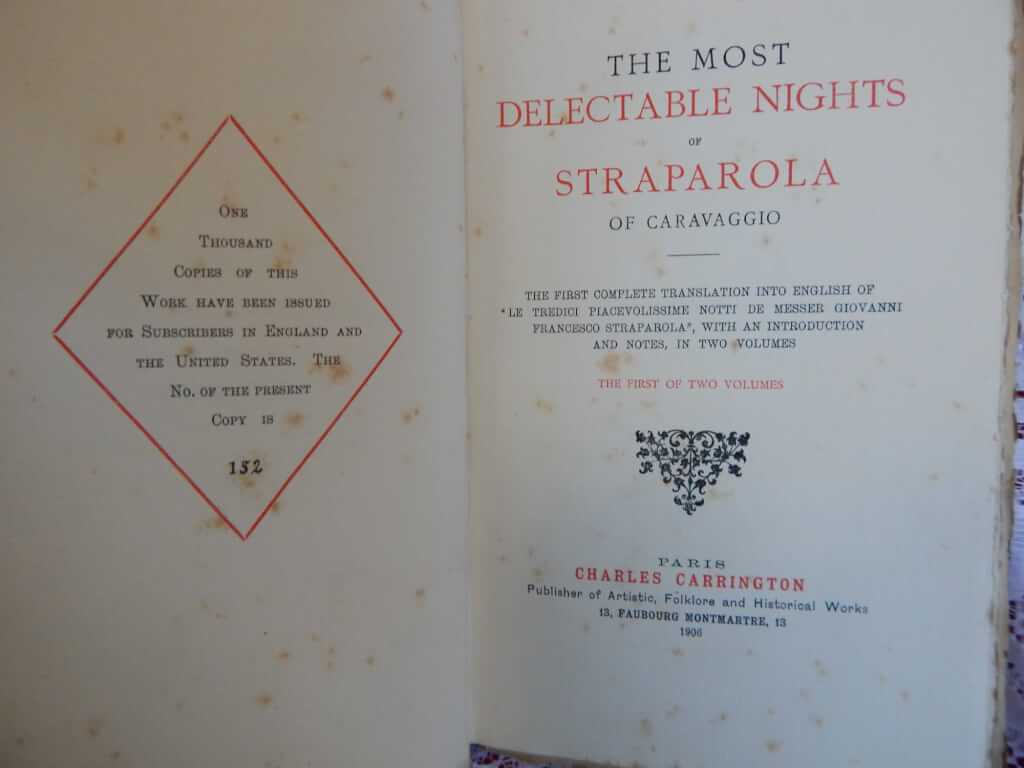
 The Most Delectable Nights of Straparola of Caravaggio, the first complete translation into english of "Le tredici piacevolissime notte, de Mesier Giovanni Francesco Straparola", with an introduction and notes, in two volumes, illust. by Léon Lebègue and Adolph Lambrecht (Charles Carrington, "Publisher of Artistic, Folklore and Historical Works", Paris, 1906, #152/1000, [first english translation, first edition] "Printed in Holland at the Printing Works of G. J. Thieme, Nymeguen.") 5.75"x8.5", 2 vol. xvi+352pp, xl+420pp, top edge gilt other edges deckled, blue boards with gilt borders and gilt lettering to the spines, red and black text and decorations throughout, numerous illustrations, both vignettes within text and tipped-in full color plates with descriptive tissue guards, handsome good+ copy for age, some foxing, small tear at top of vol. 1 spine, slight sunning to boards. This is a rare, beautifully executed, 1st edition, 1st English translation, 1st printing, low number limited edition, by Charles Carrington. Giovanni Francesco "Gianfrancesco" Straparola, also known as Zoan or Zuan Francesco Straparola da Caravaggio (1485?-1558) was a writer of poetry, and collector and writer of short stories. Some time during his life, he migrated from Caravaggio to Venice where he published a collection of stories in two volumes called Le piacevoli notti (1551 and 1553) (The Pleasant Nights, first translated by W. G. Waters in 1901 as "The Facetious Nights"). The Pleasant Nights is the work for which Straparola is most noted, and which contains a total of seventy-five short stories, fables, and fairy tales. The tales, or novelle, are divided into Nights, rather than chapters, and resemble the type of narrative presentation found in Boccaccio's Decameron. This presentation is of a gathering of Italian aristocrats, men and women, who entertain themselves by singing songs, dancing, telling stories and presenting enigmas (riddles). The Pleasant Nights contains many different types of tales, including realistic novellas, stories about practical jokes, tragic and triumphant love stories, bawdy tales, and animal stories. Some sixteen of these 74 tales are fairy tales including the story of Puss-in-Boots, the story of an impoverished boy whose enchanted cat earns him wealth, marriage to a princess, and a kingdom. Among the other fairy tales in The Pleasant Nights, we find a dragon slayer tale; the tale of a prince born in the shape of a pig due to a fairy’s curse who regains his human form only after marrying three time,; the story of Biancabella or “White Beauty” a princes who undergoes many trials until finally being saved by a fairy; and the a poor girl who acquire a magic doll that poops money and helps her marry a prince. It is claimed that many of the stories within The Pleasant Nights had been taken from earlier works, specifically from Girolamo Morlini, a 15th/16th century lawyer from Naples. If taken at his word, Straparola never denied this. In the Dedication at the front of the second volume, Straparola wrote that the stories ". . . written and collected in this volume [vol. 2 only?] are none of mine, but goods which I have feloniously taken from this man and that. Of a truth I confess they are not mine, and if I said otherwise I should lie, but nevertheless I have faithfully set them down according to the manner in which they were told by the ladies, nobles, learned men and gentlemen who gathered together for recreation."
The Most Delectable Nights of Straparola of Caravaggio, the first complete translation into english of "Le tredici piacevolissime notte, de Mesier Giovanni Francesco Straparola", with an introduction and notes, in two volumes, illust. by Léon Lebègue and Adolph Lambrecht (Charles Carrington, "Publisher of Artistic, Folklore and Historical Works", Paris, 1906, #152/1000, [first english translation, first edition] "Printed in Holland at the Printing Works of G. J. Thieme, Nymeguen.") 5.75"x8.5", 2 vol. xvi+352pp, xl+420pp, top edge gilt other edges deckled, blue boards with gilt borders and gilt lettering to the spines, red and black text and decorations throughout, numerous illustrations, both vignettes within text and tipped-in full color plates with descriptive tissue guards, handsome good+ copy for age, some foxing, small tear at top of vol. 1 spine, slight sunning to boards. This is a rare, beautifully executed, 1st edition, 1st English translation, 1st printing, low number limited edition, by Charles Carrington. Giovanni Francesco "Gianfrancesco" Straparola, also known as Zoan or Zuan Francesco Straparola da Caravaggio (1485?-1558) was a writer of poetry, and collector and writer of short stories. Some time during his life, he migrated from Caravaggio to Venice where he published a collection of stories in two volumes called Le piacevoli notti (1551 and 1553) (The Pleasant Nights, first translated by W. G. Waters in 1901 as "The Facetious Nights"). The Pleasant Nights is the work for which Straparola is most noted, and which contains a total of seventy-five short stories, fables, and fairy tales. The tales, or novelle, are divided into Nights, rather than chapters, and resemble the type of narrative presentation found in Boccaccio's Decameron. This presentation is of a gathering of Italian aristocrats, men and women, who entertain themselves by singing songs, dancing, telling stories and presenting enigmas (riddles). The Pleasant Nights contains many different types of tales, including realistic novellas, stories about practical jokes, tragic and triumphant love stories, bawdy tales, and animal stories. Some sixteen of these 74 tales are fairy tales including the story of Puss-in-Boots, the story of an impoverished boy whose enchanted cat earns him wealth, marriage to a princess, and a kingdom. Among the other fairy tales in The Pleasant Nights, we find a dragon slayer tale; the tale of a prince born in the shape of a pig due to a fairy’s curse who regains his human form only after marrying three time,; the story of Biancabella or “White Beauty” a princes who undergoes many trials until finally being saved by a fairy; and the a poor girl who acquire a magic doll that poops money and helps her marry a prince. It is claimed that many of the stories within The Pleasant Nights had been taken from earlier works, specifically from Girolamo Morlini, a 15th/16th century lawyer from Naples. If taken at his word, Straparola never denied this. In the Dedication at the front of the second volume, Straparola wrote that the stories ". . . written and collected in this volume [vol. 2 only?] are none of mine, but goods which I have feloniously taken from this man and that. Of a truth I confess they are not mine, and if I said otherwise I should lie, but nevertheless I have faithfully set them down according to the manner in which they were told by the ladies, nobles, learned men and gentlemen who gathered together for recreation." -

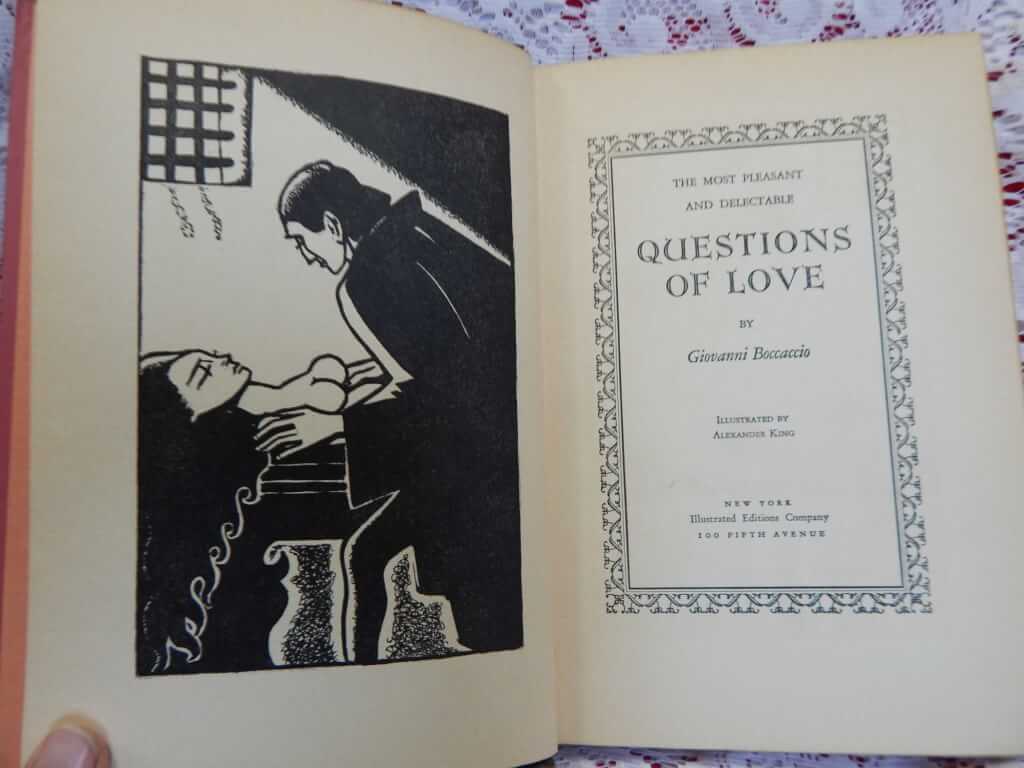 The Most Pleasant and Delectable Questions of Love, by Giovanni Boccaccio, illus. by Alexander King (Illustrated Editions Company, New York, 1931) 6.5"x9.5", 133pp, red and black boards, binding good, some yellowing to pages. "The translation of 1566 [the fourth part of Filocolo] by H. G. Put into modern English with an introduction by Thomas Bell." This book is 13 chapters of one of Boccaccio's longer works, "Il libro di Difinizioni", first translated into English by "H.G." (probably Henry Grantham) in London, 1566. In these chapters, a group of young people have gone to the country for the day. One of the young women is chosen "The Queen of Love." Each young person tells a love story and poses a question about love. The group answers; there is no right or wrong. But the final arbiter, "The Queen of Love," holds the answers. Giovanni Boccaccio (1313-1375) was an Italian author and poet, a friend, student, and correspondent of Petrarch, an important Renaissance humanist and the author of a number of notable works including the Decameron, On Famous Women, and his poetry in the Italian vernacular. Boccaccio is particularly notable for his dialogue, of which it has been said that it surpasses in verisimilitude that of virtually all of his contemporaries, since they were medieval writers and often followed formulaic models for character and plot. Alexander King (1899–1965), born Alexander Koenig in Vienna, was a bestselling humorist, memoirist and media personality of the early television era, based in the United States. In his late fifties, after becoming a frequent guest on the a Tonight Show hosted by Jack Paar, King emerged as an incongruous presence in the realm of national celebrity: an aging, irascible raconteur, with elegant mannerisms and trademark bow-tie, who spoke frankly and disarmingly about his bohemian lifestyle, multiple marriages, and years-long struggle with drug addiction. His checkered past led TIME magazine to describe him as "an ex-illustrator, ex-cartoonist, ex-adman, ex-editor, ex-playwright, ex-dope addict. For a quarter-century he was an ex-painter, and by his own bizarre account qualifies as an ex-midwife. He is also an ex-husband to three wives and an ex-Viennese of sufficient age (60) to remember muttonchopped Emperor Franz Joseph. When doctors told him a few years ago that he might soon be an ex-patient (two strokes, serious kidney disease, peptic ulcer, high blood pressure), he sat down to tell gay stories of the life of all these earlier Kings."
The Most Pleasant and Delectable Questions of Love, by Giovanni Boccaccio, illus. by Alexander King (Illustrated Editions Company, New York, 1931) 6.5"x9.5", 133pp, red and black boards, binding good, some yellowing to pages. "The translation of 1566 [the fourth part of Filocolo] by H. G. Put into modern English with an introduction by Thomas Bell." This book is 13 chapters of one of Boccaccio's longer works, "Il libro di Difinizioni", first translated into English by "H.G." (probably Henry Grantham) in London, 1566. In these chapters, a group of young people have gone to the country for the day. One of the young women is chosen "The Queen of Love." Each young person tells a love story and poses a question about love. The group answers; there is no right or wrong. But the final arbiter, "The Queen of Love," holds the answers. Giovanni Boccaccio (1313-1375) was an Italian author and poet, a friend, student, and correspondent of Petrarch, an important Renaissance humanist and the author of a number of notable works including the Decameron, On Famous Women, and his poetry in the Italian vernacular. Boccaccio is particularly notable for his dialogue, of which it has been said that it surpasses in verisimilitude that of virtually all of his contemporaries, since they were medieval writers and often followed formulaic models for character and plot. Alexander King (1899–1965), born Alexander Koenig in Vienna, was a bestselling humorist, memoirist and media personality of the early television era, based in the United States. In his late fifties, after becoming a frequent guest on the a Tonight Show hosted by Jack Paar, King emerged as an incongruous presence in the realm of national celebrity: an aging, irascible raconteur, with elegant mannerisms and trademark bow-tie, who spoke frankly and disarmingly about his bohemian lifestyle, multiple marriages, and years-long struggle with drug addiction. His checkered past led TIME magazine to describe him as "an ex-illustrator, ex-cartoonist, ex-adman, ex-editor, ex-playwright, ex-dope addict. For a quarter-century he was an ex-painter, and by his own bizarre account qualifies as an ex-midwife. He is also an ex-husband to three wives and an ex-Viennese of sufficient age (60) to remember muttonchopped Emperor Franz Joseph. When doctors told him a few years ago that he might soon be an ex-patient (two strokes, serious kidney disease, peptic ulcer, high blood pressure), he sat down to tell gay stories of the life of all these earlier Kings." -
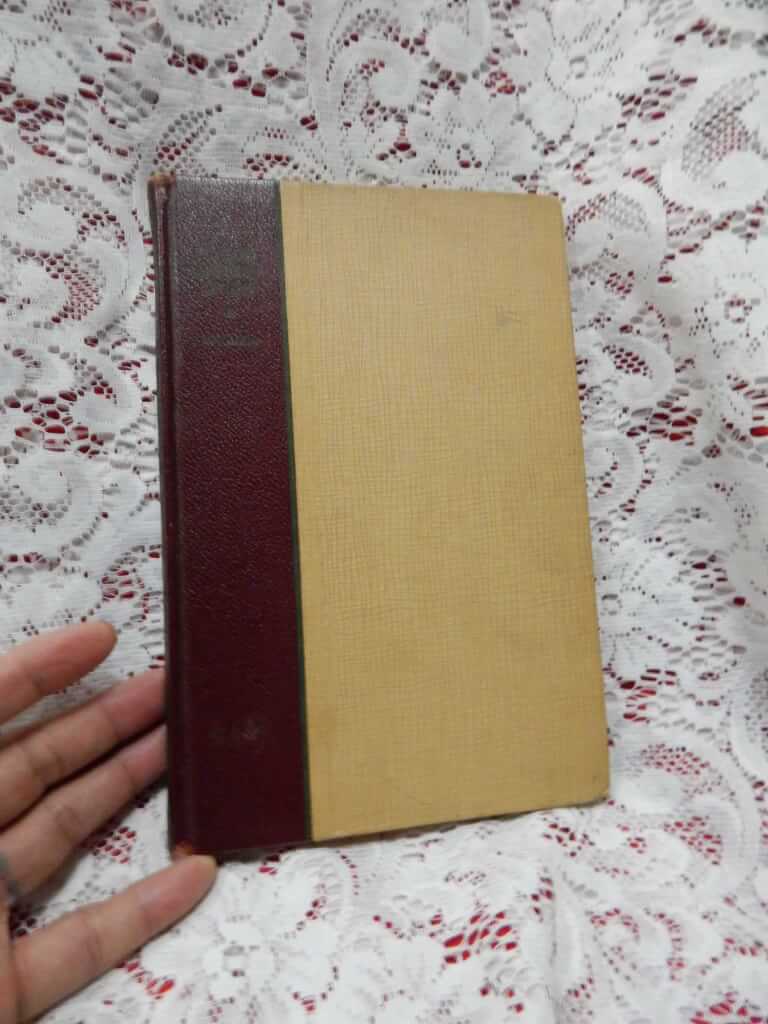
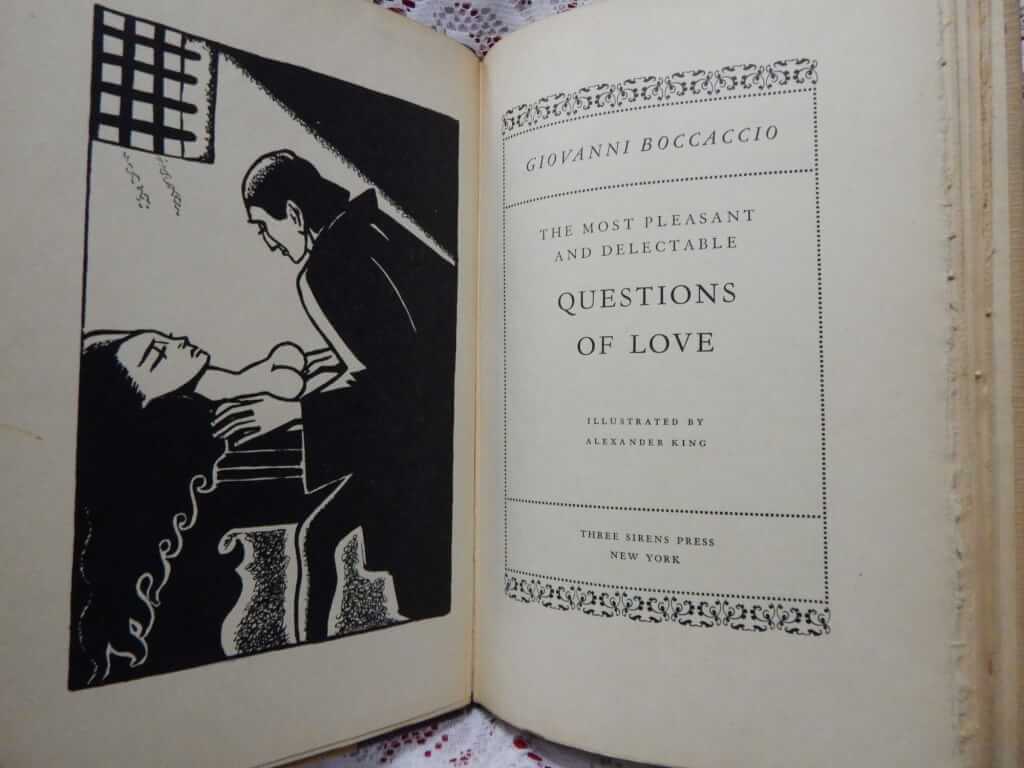 The Most Pleasant and Delectable Questions of Love, by Giovanni Boccaccio, illus. by Alexander King (Three Sirens Press, [copyright, Illustrated Editions Company, New York] 1931) 6.5"x9.5", 133pp, gilt top-edge other edges deckled, tan and maroon boards, binding good, some soiling and edges bumped. "The translation of 1566 [the fourth part of Filocolo] by H. G. Put into modern English with an introduction by Thomas Bell." This book is 13 chapters of one of Boccaccio's longer works, "Il libro di Difinizioni", first translated into English by "H.G." (probably Henry Grantham) in London, 1566. In these chapters, a group of young people have gone to the country for the day. One of the young women is chosen "The Queen of Love." Each young person tells a love story and poses a question about love. The group answers; there is no right or wrong. But the final arbiter, "The Queen of Love," holds the answers. Giovanni Boccaccio (1313-1375) was an Italian author and poet, a friend, student, and correspondent of Petrarch, an important Renaissance humanist and the author of a number of notable works including the Decameron, On Famous Women, and his poetry in the Italian vernacular. Boccaccio is particularly notable for his dialogue, of which it has been said that it surpasses in verisimilitude that of virtually all of his contemporaries, since they were medieval writers and often followed formulaic models for character and plot. Alexander King (1899–1965), born Alexander Koenig in Vienna, was a bestselling humorist, memoirist and media personality of the early television era, based in the United States. In his late fifties, after becoming a frequent guest on the a Tonight Show hosted by Jack Paar, King emerged as an incongruous presence in the realm of national celebrity: an aging, irascible raconteur, with elegant mannerisms and trademark bow-tie, who spoke frankly and disarmingly about his bohemian lifestyle, multiple marriages, and years-long struggle with drug addiction. His checkered past led TIME magazine to describe him as "an ex-illustrator, ex-cartoonist, ex-adman, ex-editor, ex-playwright, ex-dope addict. For a quarter-century he was an ex-painter, and by his own bizarre account qualifies as an ex-midwife. He is also an ex-husband to three wives and an ex-Viennese of sufficient age (60) to remember muttonchopped Emperor Franz Joseph. When doctors told him a few years ago that he might soon be an ex-patient (two strokes, serious kidney disease, peptic ulcer, high blood pressure), he sat down to tell gay stories of the life of all these earlier Kings."
The Most Pleasant and Delectable Questions of Love, by Giovanni Boccaccio, illus. by Alexander King (Three Sirens Press, [copyright, Illustrated Editions Company, New York] 1931) 6.5"x9.5", 133pp, gilt top-edge other edges deckled, tan and maroon boards, binding good, some soiling and edges bumped. "The translation of 1566 [the fourth part of Filocolo] by H. G. Put into modern English with an introduction by Thomas Bell." This book is 13 chapters of one of Boccaccio's longer works, "Il libro di Difinizioni", first translated into English by "H.G." (probably Henry Grantham) in London, 1566. In these chapters, a group of young people have gone to the country for the day. One of the young women is chosen "The Queen of Love." Each young person tells a love story and poses a question about love. The group answers; there is no right or wrong. But the final arbiter, "The Queen of Love," holds the answers. Giovanni Boccaccio (1313-1375) was an Italian author and poet, a friend, student, and correspondent of Petrarch, an important Renaissance humanist and the author of a number of notable works including the Decameron, On Famous Women, and his poetry in the Italian vernacular. Boccaccio is particularly notable for his dialogue, of which it has been said that it surpasses in verisimilitude that of virtually all of his contemporaries, since they were medieval writers and often followed formulaic models for character and plot. Alexander King (1899–1965), born Alexander Koenig in Vienna, was a bestselling humorist, memoirist and media personality of the early television era, based in the United States. In his late fifties, after becoming a frequent guest on the a Tonight Show hosted by Jack Paar, King emerged as an incongruous presence in the realm of national celebrity: an aging, irascible raconteur, with elegant mannerisms and trademark bow-tie, who spoke frankly and disarmingly about his bohemian lifestyle, multiple marriages, and years-long struggle with drug addiction. His checkered past led TIME magazine to describe him as "an ex-illustrator, ex-cartoonist, ex-adman, ex-editor, ex-playwright, ex-dope addict. For a quarter-century he was an ex-painter, and by his own bizarre account qualifies as an ex-midwife. He is also an ex-husband to three wives and an ex-Viennese of sufficient age (60) to remember muttonchopped Emperor Franz Joseph. When doctors told him a few years ago that he might soon be an ex-patient (two strokes, serious kidney disease, peptic ulcer, high blood pressure), he sat down to tell gay stories of the life of all these earlier Kings." -

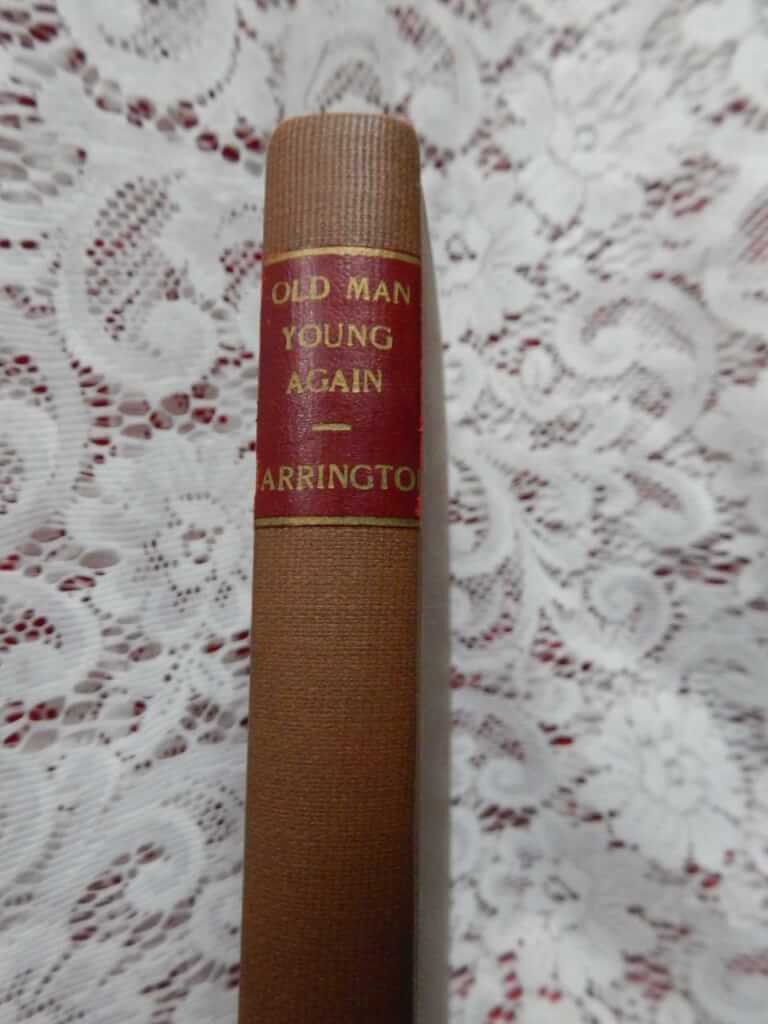 The Old Man Young Again, or Age-Rejuvenescence in the Power of Concupiscence, [Ibn-I Kemal Pasa] "literally translated from the arabic by an English Bohemian" (Charles Carrington, Paris, 1898 [first edition]) 5.25"x8.5", xi 265pp, hard bound in brown boards with gilt titles over red on spine, pages uniformly yellowed, good condition for age, binding good A very rare translation of an arabic how-to sex manual with much emphasis on aphrodisiacs with a forward by Carrington. Very few copies of this Carrington publication still exist.
The Old Man Young Again, or Age-Rejuvenescence in the Power of Concupiscence, [Ibn-I Kemal Pasa] "literally translated from the arabic by an English Bohemian" (Charles Carrington, Paris, 1898 [first edition]) 5.25"x8.5", xi 265pp, hard bound in brown boards with gilt titles over red on spine, pages uniformly yellowed, good condition for age, binding good A very rare translation of an arabic how-to sex manual with much emphasis on aphrodisiacs with a forward by Carrington. Very few copies of this Carrington publication still exist. -

 The Old Man Young Again, or Age-Rejuvenescence in the Power of Concupiscence, [Ibn-I Kemal Pasa] "literally translated from the arabic by an English Bohemian" (Charles Carrington, Paris, 1898 [first edition]) 9" X 5.5", xi 265pp, original soft covers, unread copy (most pages uncut on top, some uncut fore edge). Protective wraps. A very rare translation of an arabic how-to sex manual with much emphasis on aphrodisiacs with a forward by Carrington. Very few copies of this Carrington publication still exist. This is particularly unique because many pages remain uncut. I know of no other copies in this unread condition!
The Old Man Young Again, or Age-Rejuvenescence in the Power of Concupiscence, [Ibn-I Kemal Pasa] "literally translated from the arabic by an English Bohemian" (Charles Carrington, Paris, 1898 [first edition]) 9" X 5.5", xi 265pp, original soft covers, unread copy (most pages uncut on top, some uncut fore edge). Protective wraps. A very rare translation of an arabic how-to sex manual with much emphasis on aphrodisiacs with a forward by Carrington. Very few copies of this Carrington publication still exist. This is particularly unique because many pages remain uncut. I know of no other copies in this unread condition! -

 The Perfumed Garden: A Manual of Arabian Erotology, Sheikh Nefzawi (Editions de la Fontaine d'Or, Paris, 1900 [Imprimerie M. Laballery, Clamecy (Nievre) 1952]) 8.75" X 5.5", 189pp. full leather rebinding of the paperback (original covers included), fine condition, ribbin intact, Original back cover states "not to be sold in England or U.S.A" The Perfumed Garden of Sensual Delight is a fifteenth-century Arabic sex manual and work of erotic literature. The book presents opinions on what qualities men and women should have to be attractive, gives advice on sexual technique, warnings about sexual health, and recipes to remedy sexual maladies. It gives lists of names for the penis and vagina, has a section on the interpretation of dreams, and briefly describes sex among animals. Interspersed with these there are a number of stories which are intended to give context and amusement. Sheikh Nefzawi (Abu Abdullah Muhammad ben Umar Nafzawi), was born among the Berber Nefzawa tribe in the south of present-day Tunisia. He probably wrote The Perfumed Garden sometime during the twelfth century, compiled at the request of the Hafsid ruler of Tunis, Abū Fāris ʿAbd al-ʿAzīz al-Mutawakkil. A nice full leather copy of the work.
The Perfumed Garden: A Manual of Arabian Erotology, Sheikh Nefzawi (Editions de la Fontaine d'Or, Paris, 1900 [Imprimerie M. Laballery, Clamecy (Nievre) 1952]) 8.75" X 5.5", 189pp. full leather rebinding of the paperback (original covers included), fine condition, ribbin intact, Original back cover states "not to be sold in England or U.S.A" The Perfumed Garden of Sensual Delight is a fifteenth-century Arabic sex manual and work of erotic literature. The book presents opinions on what qualities men and women should have to be attractive, gives advice on sexual technique, warnings about sexual health, and recipes to remedy sexual maladies. It gives lists of names for the penis and vagina, has a section on the interpretation of dreams, and briefly describes sex among animals. Interspersed with these there are a number of stories which are intended to give context and amusement. Sheikh Nefzawi (Abu Abdullah Muhammad ben Umar Nafzawi), was born among the Berber Nefzawa tribe in the south of present-day Tunisia. He probably wrote The Perfumed Garden sometime during the twelfth century, compiled at the request of the Hafsid ruler of Tunis, Abū Fāris ʿAbd al-ʿAzīz al-Mutawakkil. A nice full leather copy of the work. -
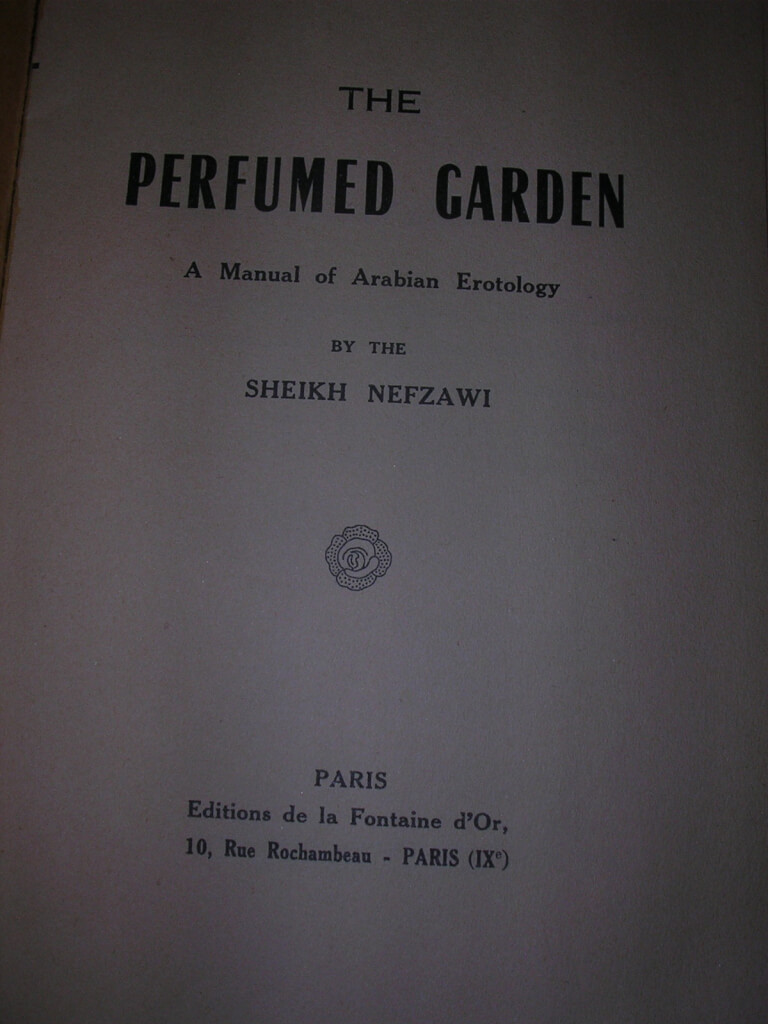
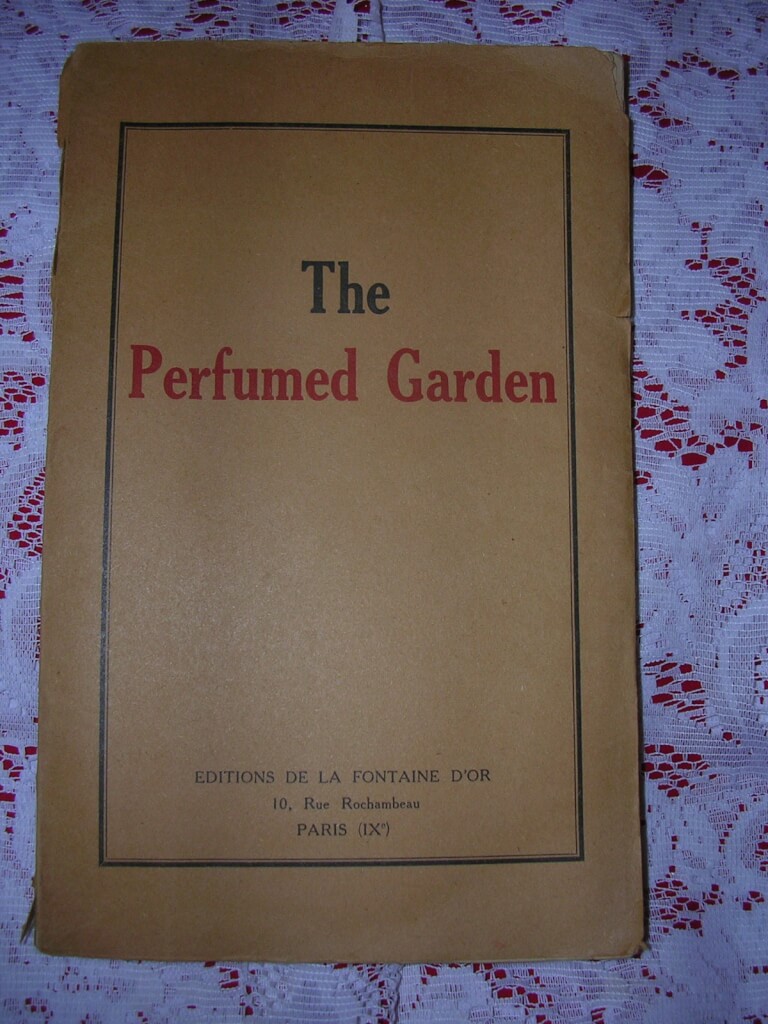 The Perfumed Garden: A Manual of Arabian Erotology, Sheikh Nefzawi (Editions de la Fontaine d'Or, Paris, 1900 [Imprimerie M. Laballery, Clamecy (Nievre) 1952]) 8.75" X 5.5", 189pp. original soft wrappers, good condition for age, spine detaching at top and bottom, some small rips and bumps. Back cover states "not to be sold in England or U.S.A" The Perfumed Garden of Sensual Delight is a fifteenth-century Arabic sex manual and work of erotic literature. The book presents opinions on what qualities men and women should have to be attractive, gives advice on sexual technique, warnings about sexual health, and recipes to remedy sexual maladies. It gives lists of names for the penis and vagina, has a section on the interpretation of dreams, and briefly describes sex among animals. Interspersed with these there are a number of stories which are intended to give context and amusement. Sheikh Nefzawi (Abu Abdullah Muhammad ben Umar Nafzawi), was born among the Berber Nefzawa tribe in the south of present-day Tunisia. He probably wrote The Perfumed Garden sometime during the twelfth century, compiled at the request of the Hafsid ruler of Tunis, Abū Fāris ʿAbd al-ʿAzīz al-Mutawakkil.
The Perfumed Garden: A Manual of Arabian Erotology, Sheikh Nefzawi (Editions de la Fontaine d'Or, Paris, 1900 [Imprimerie M. Laballery, Clamecy (Nievre) 1952]) 8.75" X 5.5", 189pp. original soft wrappers, good condition for age, spine detaching at top and bottom, some small rips and bumps. Back cover states "not to be sold in England or U.S.A" The Perfumed Garden of Sensual Delight is a fifteenth-century Arabic sex manual and work of erotic literature. The book presents opinions on what qualities men and women should have to be attractive, gives advice on sexual technique, warnings about sexual health, and recipes to remedy sexual maladies. It gives lists of names for the penis and vagina, has a section on the interpretation of dreams, and briefly describes sex among animals. Interspersed with these there are a number of stories which are intended to give context and amusement. Sheikh Nefzawi (Abu Abdullah Muhammad ben Umar Nafzawi), was born among the Berber Nefzawa tribe in the south of present-day Tunisia. He probably wrote The Perfumed Garden sometime during the twelfth century, compiled at the request of the Hafsid ruler of Tunis, Abū Fāris ʿAbd al-ʿAzīz al-Mutawakkil. -
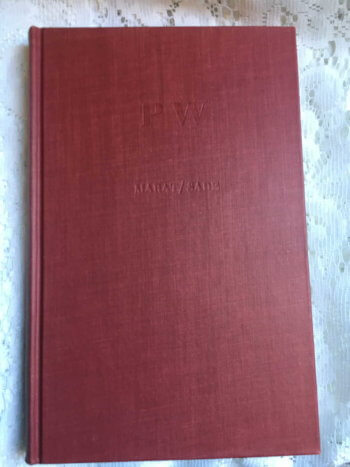
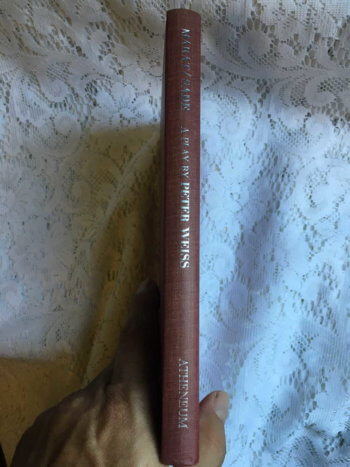 The Persecution and Assassination of Jean-Paul Marat as Performed by the Inmates of the Asylum of Charenton under the Direction of the Marquis de Sade, Peter Weiss, English version Geoffrey Skelton, verse adaptation Adrian Mitchell, introduction Peter Brook (Atheneum, New York, 1965, stated first american edition) 5.5"x8.5", x+117pp, hardbound, red boards, silver titles on spine, blind stamped title on cover, top-edge inked, near mint condition This is a 1963 play by Peter Weiss originally published in German under the title Die Verfolgung und Ermordung Jean Paul Marats, dargestellt durch die Schauspielgruppe des Hospizes zu Charenton unter Anleitung des Herrn de Sade, usually shortened to Marat/Sade. This is the first American version, published in 1965. A "play within a play", Merats/Sade incorporates dramatic elements characteristic of both Artaud and Brecht. It is a depiction of class struggle and human suffering that asks whether true revolution comes from changing society or changing oneself. Peter Ulrich Weiss (1916-1982) was a German writer, painter, graphic artist, and experimental filmmaker of adopted Swedish nationality. He earned his reputation in the post-war German literary world as the proponent of an avant-garde, meticulously descriptive writing, as an exponent of autobiographical prose, and also as a politically engaged dramatist. He gained international success with Marat/Sade, the American production of which was awarded a Tony Award and its subsequent film adaptation directed by Peter Brook. His "Auschwitz Oratorium," The Investigation, served to broaden the debates over the so-called "Aufarbeitung der Vergangenheit" (or formerly) "Vergangenheitsbewältigung" or "politics of history." Weiss' magnum opus was The Aesthetics of Resistance, called the "most important German-language work of the 70s and 80s.
The Persecution and Assassination of Jean-Paul Marat as Performed by the Inmates of the Asylum of Charenton under the Direction of the Marquis de Sade, Peter Weiss, English version Geoffrey Skelton, verse adaptation Adrian Mitchell, introduction Peter Brook (Atheneum, New York, 1965, stated first american edition) 5.5"x8.5", x+117pp, hardbound, red boards, silver titles on spine, blind stamped title on cover, top-edge inked, near mint condition This is a 1963 play by Peter Weiss originally published in German under the title Die Verfolgung und Ermordung Jean Paul Marats, dargestellt durch die Schauspielgruppe des Hospizes zu Charenton unter Anleitung des Herrn de Sade, usually shortened to Marat/Sade. This is the first American version, published in 1965. A "play within a play", Merats/Sade incorporates dramatic elements characteristic of both Artaud and Brecht. It is a depiction of class struggle and human suffering that asks whether true revolution comes from changing society or changing oneself. Peter Ulrich Weiss (1916-1982) was a German writer, painter, graphic artist, and experimental filmmaker of adopted Swedish nationality. He earned his reputation in the post-war German literary world as the proponent of an avant-garde, meticulously descriptive writing, as an exponent of autobiographical prose, and also as a politically engaged dramatist. He gained international success with Marat/Sade, the American production of which was awarded a Tony Award and its subsequent film adaptation directed by Peter Brook. His "Auschwitz Oratorium," The Investigation, served to broaden the debates over the so-called "Aufarbeitung der Vergangenheit" (or formerly) "Vergangenheitsbewältigung" or "politics of history." Weiss' magnum opus was The Aesthetics of Resistance, called the "most important German-language work of the 70s and 80s. -

 The Photographer, (n.p. n.d.) 4.5" x 3", 8pp. pamphlet, stapled Tijuana bibles (also known as eight-pagers, bluesies, gray-backs, Jiggs-and-Maggie books, jo-jo books, Tillie-and-Mac books, and two-by-fours) were little pornographic comic books produced in the United States from the 1920s to the early 1960s.
The Photographer, (n.p. n.d.) 4.5" x 3", 8pp. pamphlet, stapled Tijuana bibles (also known as eight-pagers, bluesies, gray-backs, Jiggs-and-Maggie books, jo-jo books, Tillie-and-Mac books, and two-by-fours) were little pornographic comic books produced in the United States from the 1920s to the early 1960s. -
Out of stock
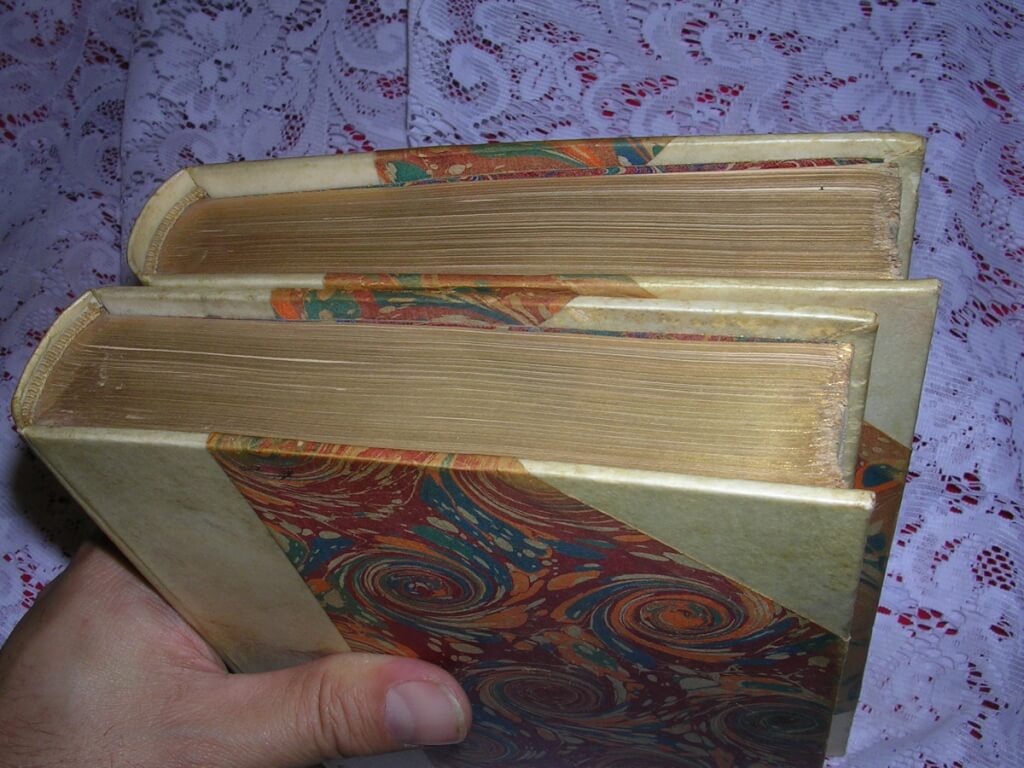
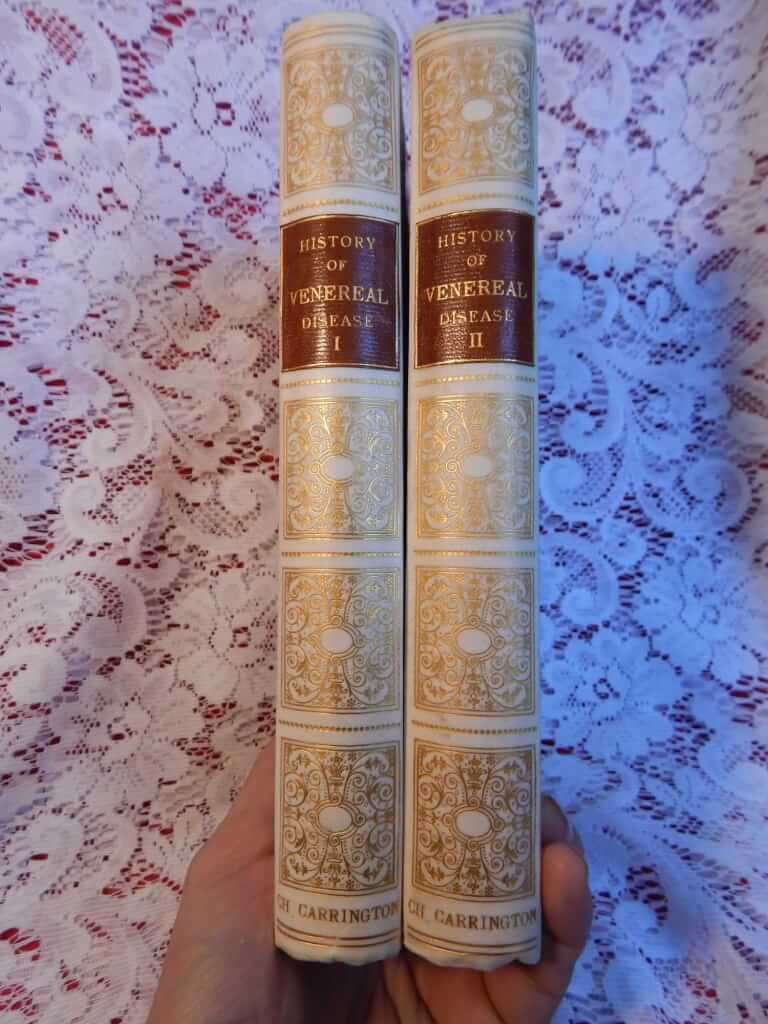 Dr. Julius Rosenbaum, trans. (from German) by "An Oxford M.A." (Charles Carrington, Paris, 1901) 9" X 5.5" 2 vol., xxxvi 297pp. (3 pages of ads), v. 342pp. Hardbound 1/2-bound in vellum over decorated boards, gilt lettering on spine, top edge gilt, other edges deckle. Marlbled endpapers. Very good condition, binding tight #84/500
Dr. Julius Rosenbaum, trans. (from German) by "An Oxford M.A." (Charles Carrington, Paris, 1901) 9" X 5.5" 2 vol., xxxvi 297pp. (3 pages of ads), v. 342pp. Hardbound 1/2-bound in vellum over decorated boards, gilt lettering on spine, top edge gilt, other edges deckle. Marlbled endpapers. Very good condition, binding tight #84/500 -
Out of stock

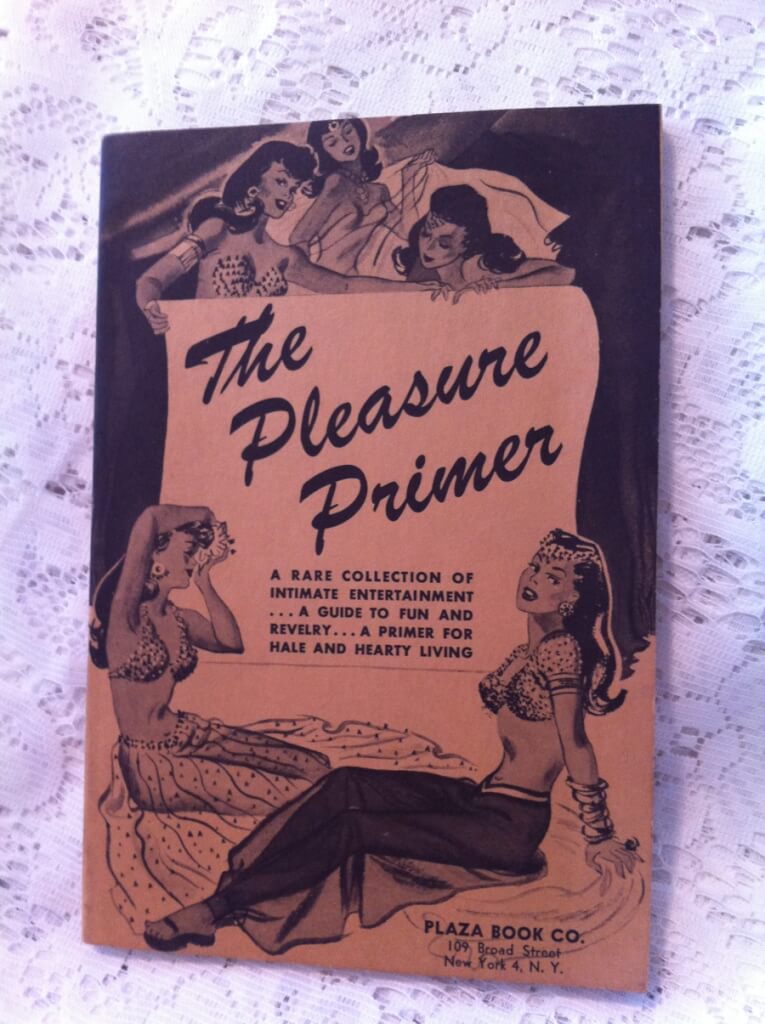 The Pleasure Primer, a rare collection of intimate entertainment...a guide to fun and revelry...a primer for hale and hearty living, Ed. Walter S. Keating, Illus. Alton Pickens (Plaza Book Company, New York, 1943) 8" x 5.5", 128pp., soft covers, near fine condition. From the ad: "No woman is safe (or really wants to be) when a man’s mind is in the bedroom. See the tempting, puffed-up featherbed to be despoiled! Hear the irrepressible squeals of pleasure! Those to whom bedtime has come to mean “bed and bored” will find “bed and better” . . . Thousands are now enjoying Rollicking Bedside Fun, and you will too, when you possess this ideal bedside companion. Here’s entertainment for open minds and ticklish spines. Here’s lusty, merry recreation for un-squeamish men and women. Here’s life with apologies to none. Collected, selected from the best there is, this zestful Primer is an eye-opener … YOU ARE INVITED TO EXAMINE THE PLEASURE PRIMER 10 DAYS AT OUR EXPENSE. IT IS GUARANTEED TO PLEASE OR YOUR PURCHASE PRICE WILL BE REFUNDED AT ONCE!" This is a collection of articles and reprints of stories by noted authors throughout history from Boccaccio to Twain.
The Pleasure Primer, a rare collection of intimate entertainment...a guide to fun and revelry...a primer for hale and hearty living, Ed. Walter S. Keating, Illus. Alton Pickens (Plaza Book Company, New York, 1943) 8" x 5.5", 128pp., soft covers, near fine condition. From the ad: "No woman is safe (or really wants to be) when a man’s mind is in the bedroom. See the tempting, puffed-up featherbed to be despoiled! Hear the irrepressible squeals of pleasure! Those to whom bedtime has come to mean “bed and bored” will find “bed and better” . . . Thousands are now enjoying Rollicking Bedside Fun, and you will too, when you possess this ideal bedside companion. Here’s entertainment for open minds and ticklish spines. Here’s lusty, merry recreation for un-squeamish men and women. Here’s life with apologies to none. Collected, selected from the best there is, this zestful Primer is an eye-opener … YOU ARE INVITED TO EXAMINE THE PLEASURE PRIMER 10 DAYS AT OUR EXPENSE. IT IS GUARANTEED TO PLEASE OR YOUR PURCHASE PRICE WILL BE REFUNDED AT ONCE!" This is a collection of articles and reprints of stories by noted authors throughout history from Boccaccio to Twain. -
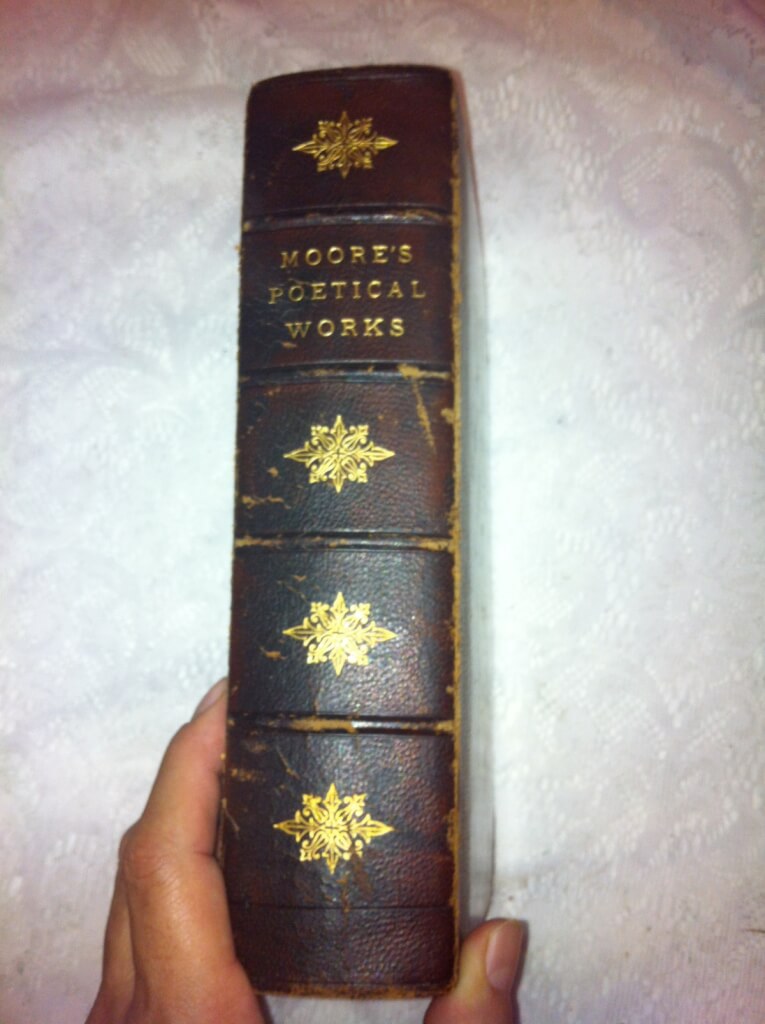
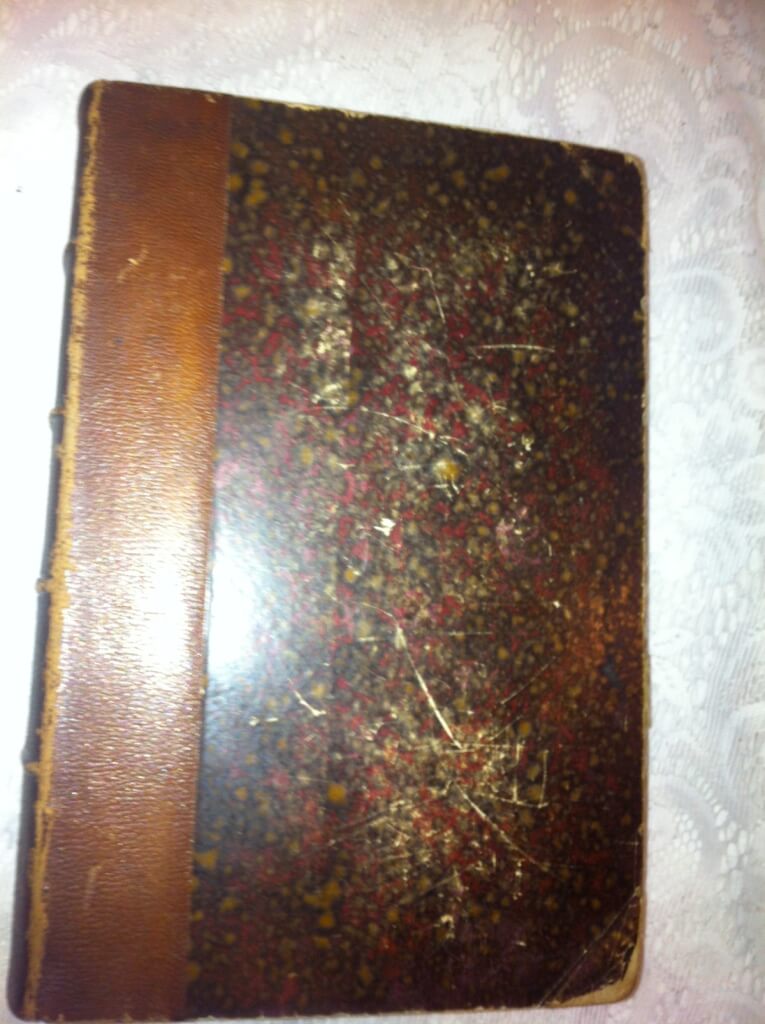 The Poetical Works of Thomas Moore, Thomas Moore (Oliver S. Felt, New York, nd. [c.1860]) 9.5" X 6.5", 776pp., half leather, 4 raised bands. 8 volumes in one. Beautiful steel engravings throughout. Fair condition, binding good, frontispiece missing. Thomas Moore (1779 - 1852) is considered Ireland's "National Bard". He was a poet, singer, songwriter, and entertainer. He was responsible, with John Murray, for burning Lord Byron's memoirs after his death.
The Poetical Works of Thomas Moore, Thomas Moore (Oliver S. Felt, New York, nd. [c.1860]) 9.5" X 6.5", 776pp., half leather, 4 raised bands. 8 volumes in one. Beautiful steel engravings throughout. Fair condition, binding good, frontispiece missing. Thomas Moore (1779 - 1852) is considered Ireland's "National Bard". He was a poet, singer, songwriter, and entertainer. He was responsible, with John Murray, for burning Lord Byron's memoirs after his death. -
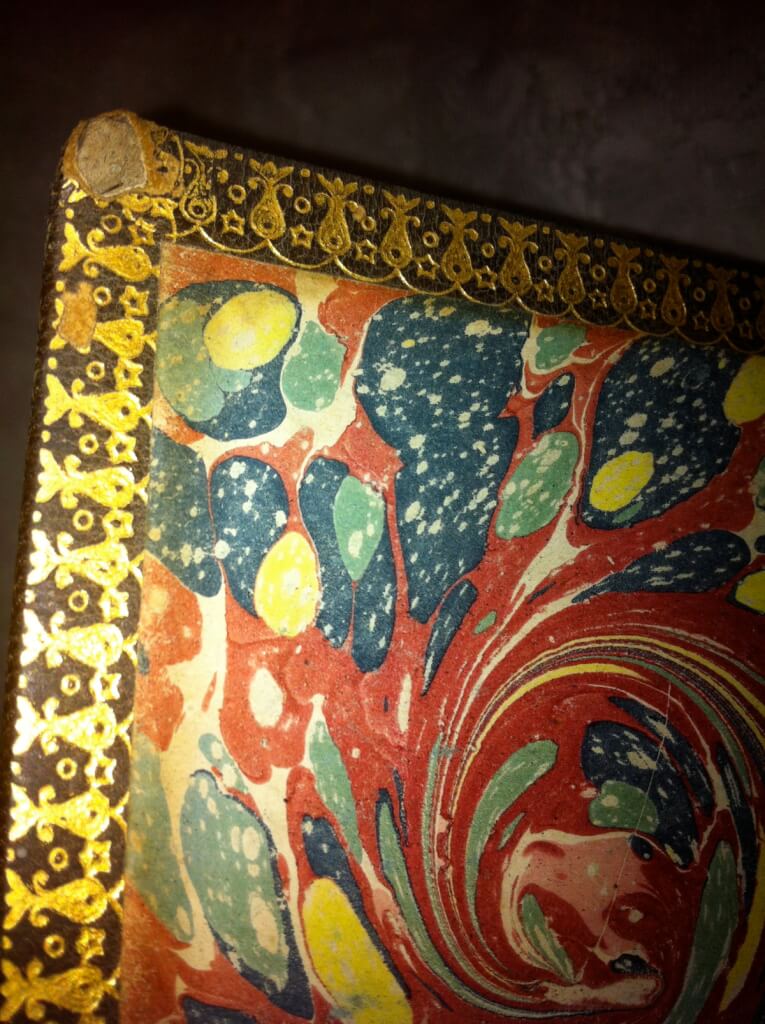
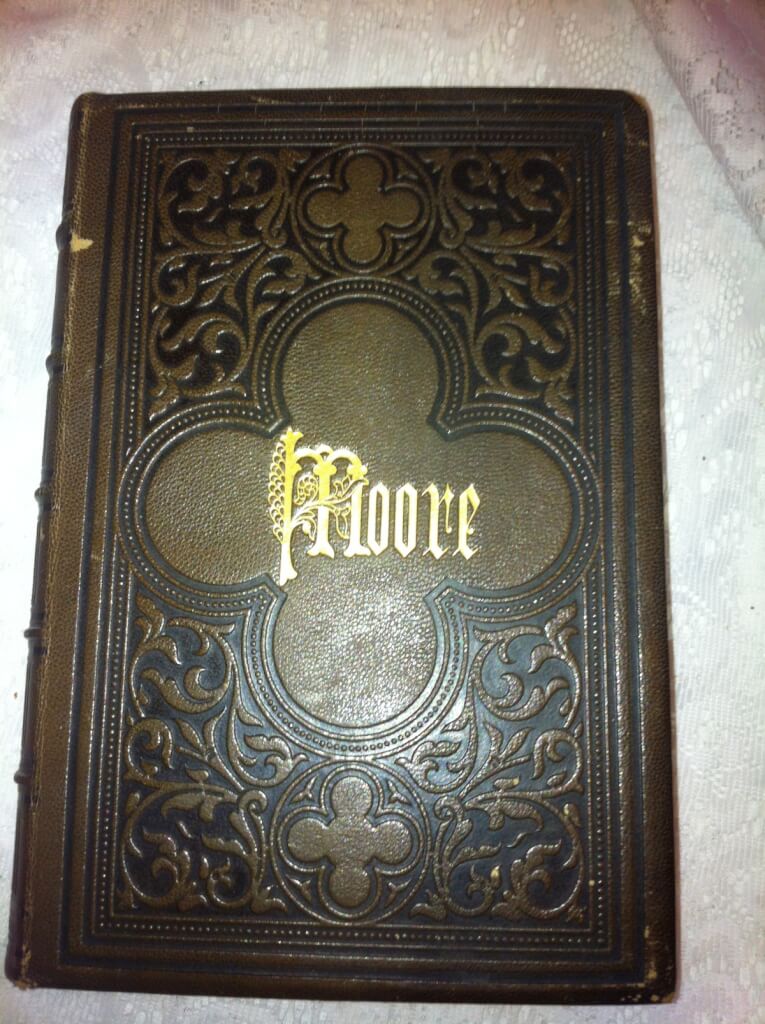 The Poetical Works of Thomas Moore, Thomas Moore (Oliver S. Felt, New York, nd. [c.1860]) 9.5" X 6.5", 776pp., 8 volumes in one. Full leather binding, tooled leather, gilt lettering and decorations, 5 raised bands on spine, marbled end papers, gilt edges. Beautiful steel engravings throughout with tissue guards. Thomas Moore (1779 _ 1852) is considered Ireland's "National Bard". He was a poet, singer, songwriter, and entertainer. He was responsible, with John Murray, for burning Lord Byron's memoirs after his death.
The Poetical Works of Thomas Moore, Thomas Moore (Oliver S. Felt, New York, nd. [c.1860]) 9.5" X 6.5", 776pp., 8 volumes in one. Full leather binding, tooled leather, gilt lettering and decorations, 5 raised bands on spine, marbled end papers, gilt edges. Beautiful steel engravings throughout with tissue guards. Thomas Moore (1779 _ 1852) is considered Ireland's "National Bard". He was a poet, singer, songwriter, and entertainer. He was responsible, with John Murray, for burning Lord Byron's memoirs after his death.












